Regarding the protection of wood exposed to the outside I wrote an article with most frequently asked questions received from you. As this is a good time for activities and small building outside, the questions keep coming and diversifying. We are glad that you trust us and when we see that the advice we have received has been helpful. So, I thought it would be much better to make a sort of "rule book" of working with wood outside. Because it is not only the products and treatments applied to wood that are important. Sustainable work starts with the choice of wood. Below are some important rules for making your wooden constructions as resistant as possible to damp, temperature variations, various precipitations, insects, molds and the burning rays of the sun.
1. Choose wood that is structurally more resistant to the outdoors
Not all species of wood have the same outdoor resistance. Density, porosity, and the presence of resins or tannins influence the wood's resistance to water, insect and mold attack.
Soft, soft woods, but also hard woods with very large pores and many pores are not very resistant to moisture. They absorb water easily which can lead to wood rot.
Wood containing resins has very good outdoor resistance (resinous in general, larch and spruce in particular), oils (teak) or tannins (acaciaSpecies with very good rot resistance are chestnut and ulmul.
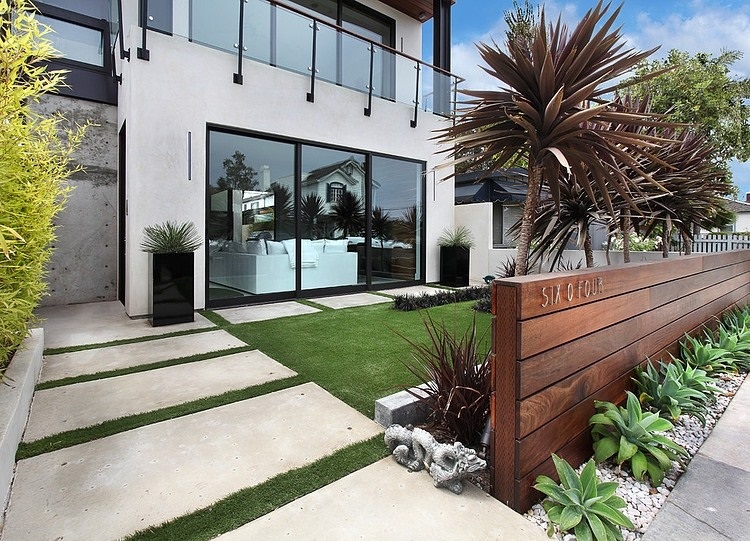
photo source: dickoatts.com
2. Do not use very dry or very wet wood
Wood moisture used outdoors is different from that used indoors. The evenness of the wood depends on the moisture content of the area where the wood is used. By area is meant large geographical area. In Romania, the humidity is 8-12% (6% for resonance musical instruments) for wood used indoors and 14-18% for wood used outdoors.
A wood that is too dry when used outdoors will absorb moisture from the environment and dimensional variations and even cracking due to internal stresses will occur. One that is too damp will quickly lose moisture and shrink in size, resulting in so-called 'play' in the installed planks. Warping and cracking can also occur.
3. Use only D3 or D4 adhesive, specially formulated for outdoor conditions
If you do adhesive joints or solid wood panel constructions (hivesAlways use specially formulated adhesive for exterior use. But be careful when choosing adhesives. There are adhesives that can be used outdoors, but for bonding protected objects. That is, they stay under awnings and are not directly in direct sunlight or rain. These are the D3 outdoor adhesives. To avoid problems it is better to use D4 adhesives.
Never use D1 or D2 adhesives outdoors as they have no moisture resistance and the joints will fall apart after a very short time.
4. If possible, do not put the wood directly on the ground
The most rot-prone area for wood is just above the ground. If you take out a stake that has been in the ground for a longer period of time you will see that the thinned and damaged area is that, not the one that has been in the ground. This is the oxidation that occurs due to the oxygen in the air, oxidation that is greatly favored by moisture (salt water acts as an electrolyte).
If the work does not require you to put the wood in or on the ground leave a small gap and use other materials (metal, plastic) to make the connection with the ground. If you are using wooden stakes or posts that have to be driven into the ground, protect them with metal or plastic to just above the ground surface.
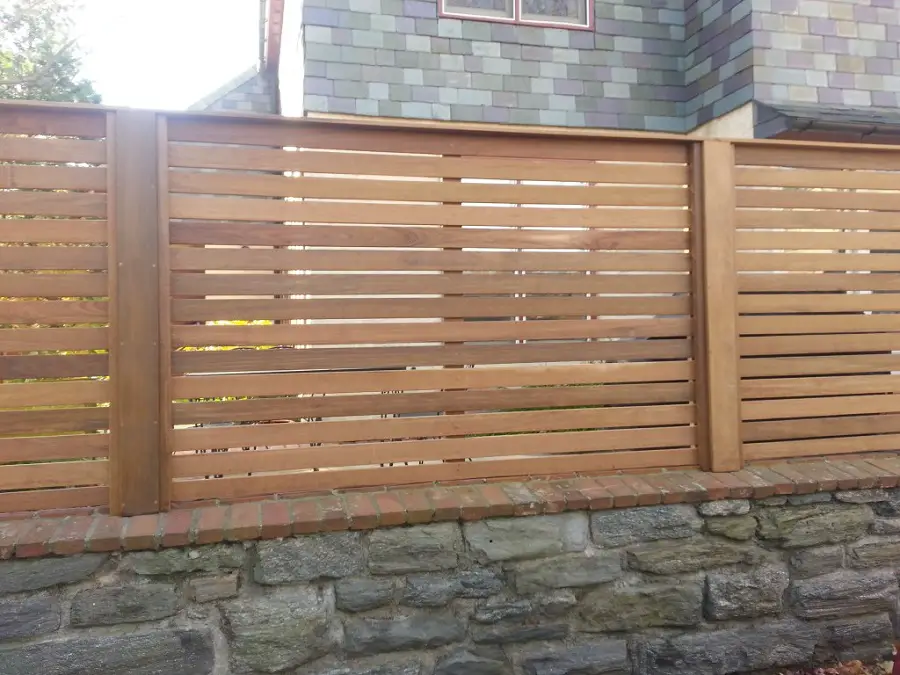
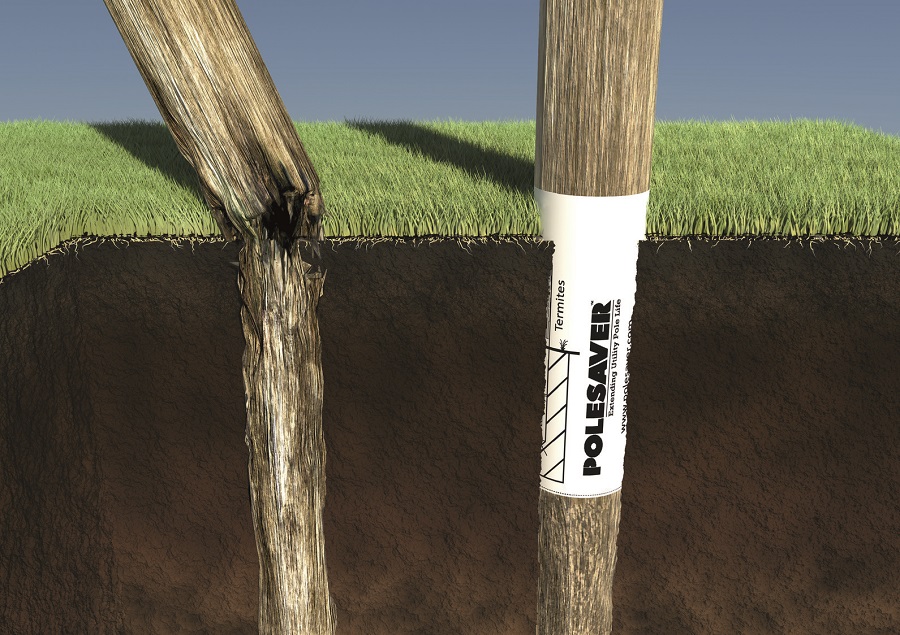
5. Protect wood against insects, fungus and mold
Wood protected in this way will last longer without turning black over time (from mold). Sometimes the protective substances are contained in the varnish (2-in-1 or 3-in-1 products). But there are also separate products for treatment. These are generally concentrated products that are diluted with water. The dilution is different depending on the type of wood, harder or softer. For hardwoods (chestnut) the dilution is lower, because the wood absorbs little and must be protected. Soft woods (resinous) absorb more and the solution can be more diluted. Dilution ratios are specified by the manufacturer.
Wooden objects that have been attacked by mold and have turned black can be restored to their original state by using bleach (sodium hypochlorite bleach). It is a simple, cheap and handy solution.
6. Do not use colorless transparent materials. Coloring is not only aesthetic in this case
There are many who want to preserve the natural color of wood and turn to colorless transparent materials. These materials do not protect against UV radiation and the wood will darken over time. The varnish will also suffer because there will be nothing to reflect the sun's rays, the temperature will be much higher and it will deteriorate faster.
That doesn't mean you have to use paints that totally cover the wood. Although, if we establish a hierarchy, paints are the most resistant. There isn't a varnish on the market that says it's exterior resistant that doesn't contain a small amount of pigment. Clear does not mean colorless. There are clear lacquers or varnishes that are honey-colored, a very light color that slightly changes the color of the natural wood, but protects much better.
Wood changes color over time anyway. You won't be able to keep the same color it has when you do the processing (cutting, gelling). This is the transformation of some of the wood's internal compounds under the action of light and in contact with oxygen in the air. Furniture in the house, protected with varnish, also changes color over time. We don't notice it because it's colored or because it changes completely. But if you put a book on clear lacquered softwood furniture and leave it for a few months, you can easily see the color change. So rather than letting it change as it wants, it's better to control the change yourself by using lightly colored materials for protection that don't color very much but prolong the life of the finish.
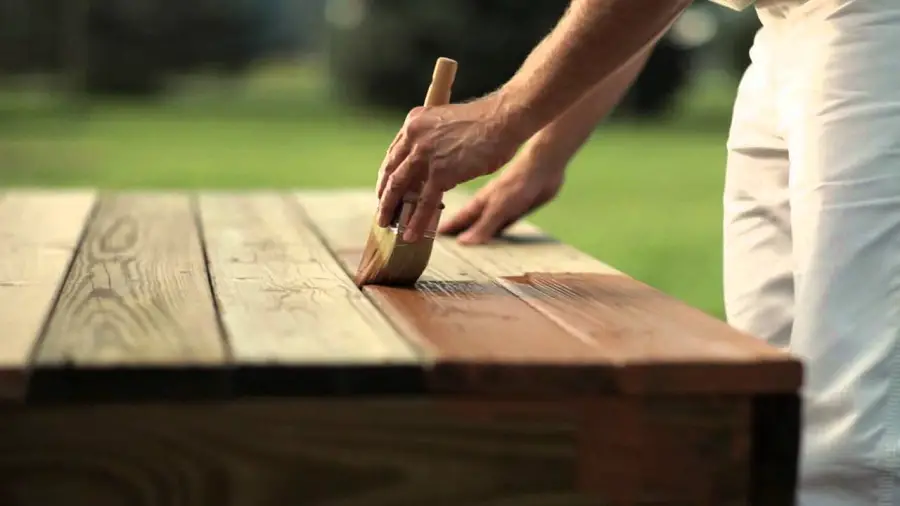
7. Don't apply thick coats for better protection. You'll get the opposite effect
There is an idea that applying several coats of varnish will protect the wood better and prevent water from getting to it. Not the best idea. Thick layers become stiffer and tend to crack over time. In addition, solid wood has natural dimensional variation depending on moisture variation. A rigid coating will crack much faster and instead of a much more durable protection over time you get a shorter lasting one.
Indeed there are some species, such as oak or chestnut, that have larger pores and need more layers to cover the pores and reduce moisture absorption. More layers means 3 and not very thick layers. It's good to know that 2-3 thin coats of varnish applied with drying in between will protect better than a single coat of the same thickness with 3 coats.
8. Protect the wood on all sides, inside and out
For best protection, apply varnish or oil to all sides of the piece of wood. Through unprotected areas, even if not visible, the wood absorbs moisture. You will be surprised if the wood warps or swells. If you are curious enough to see what has happened, you will discover that rainwater has gotten into hidden areas. So can mold.
9. Use for coverage elastic materials made specifically for outdoors or non-film forming products - oil or wax
All of these products are good for exterior use, only some are more suitable for certain jobs. It's best to use finishing systems for windows and doors that include colored, mildew-resistant impregnants and resilient primers and varnishes that protect against weathering and UV radiation.
For fences, sagebrush, pergolas, it is simpler and more useful to use oils or wax impregnants. The oil penetrates deep into the wood and protects it from damp and the wax makes a thin film on the surface on which the water runs off. In these cases, protection with varnish does not seem a good choice. Such protection needs maintenance to last as the manufacturers say, 10-12 years. If the maintenance is not done - and let's face it, we don't think much about fence maintenance methods - the pond will crack, water will get under it and it will leak. It will look bad and we will want to redo it. To refinish it, we'll have to remove everything that's left on the wood and redo the finish. Not very simple!
With oil or wax the resistance over time is less than with varnish. Resistance depends on how rain washed the wood will be. Because that is what makes the finish less resistant. Oil and wax are rain washed. Nothing flakes off, nothing has to be removed to refinish. When you find that the wood no longer has the sheen given by the oil or wax, and takes on a dry look, apply another coat of oil or wax. These are the reasons why I highly recommend oil protection: good protection against moisture and ease of refinishing.
Exterior varnishes and primers are elastic because wood varies in size with changes in humidity and the varnish must follow this variation without cracking. This is why you should not use products for indoors, even if you have seen that they are hard and tough. They are not elastic and crack very quickly.
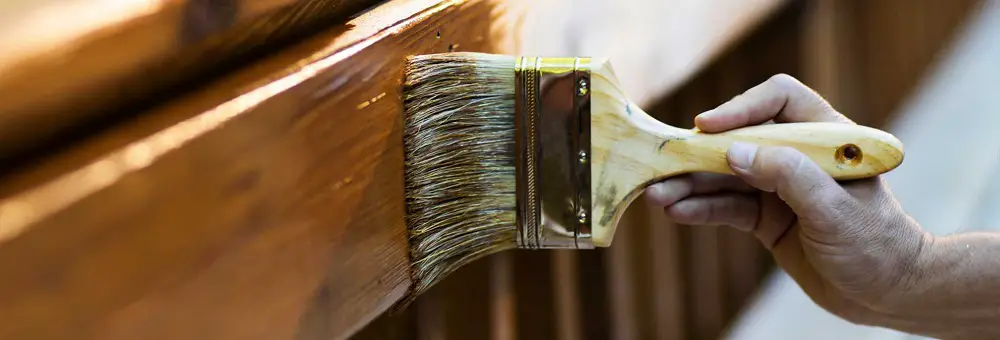
10. Don't compromise on the quality of materials and follow the instructions when applying materials. Even good materials don't work wonders
I'm not saying you have to buy the most expensive products. I am saying that you should get products that are clearly made for outdoors, where the manufacturer writes as much information as possible on the label, tells you how to use them, if they are in the system with other products (you need other products to get the best result).
And while we're on the subject of how to use it: if you want good results, you have to follow the directions for use. No matter how good a product is and no matter how long the manufacturer tells you it will last, if you don't follow the dilution, drying time, application method, sanding between coats, amount and number of coats applied and other such recommendations, the protection will certainly not last the maximum period the manufacturer talks about. They will last less, you will be disappointed and you will also lose confidence in the brand through no fault of their own. There are no miracle materials but good or very good quality materials applied correctly.
One more thing to know. Outdoor resistance depends on many factors and they can be different on the same construction. For example, windows that are on the side of the house where the sun is more present during the day or where in winter the wind blows and snow settles will be less resistant than those in more sheltered areas, even if they are protected with the same materials and the same technology. The same applies to other timber constructions.
11. Don't assume you've painted for life. Without proper maintenance no product will last 10-15 years.
There is no 10-15 years resistance without maintenance. Using protective materials such as oils or maintenance waxes 2-4 years after varnishes are applied can make them last even longer. In the case of windows, if you find the time when you wash your windows for Christmas and Easter cleanings, to wipe the maintenance oil soaked cloth over the outside window frames at the end you will find that they will hold up very well for years with no cracking or peeling.
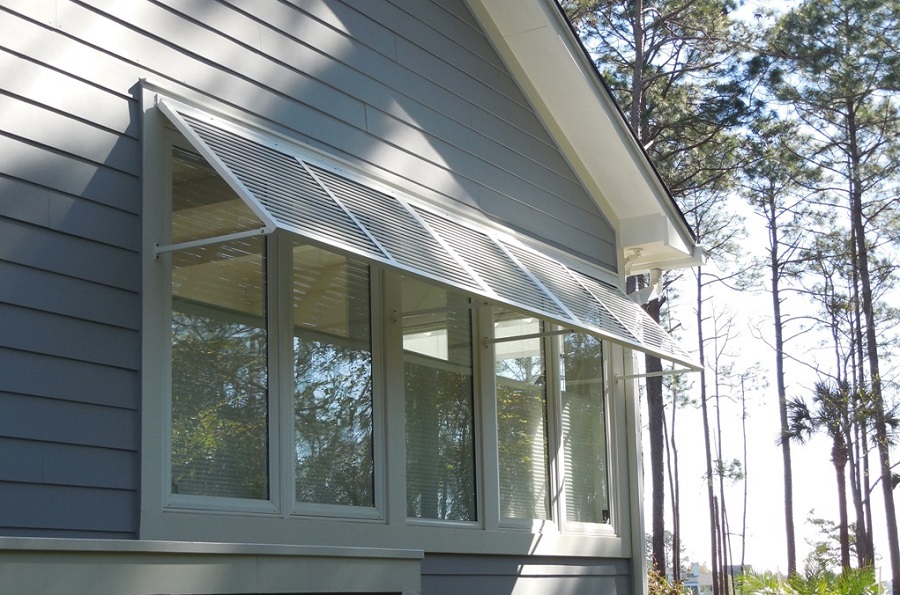
12. Works such as doors, window, shutters, terase last much better if protected by awnings
UV radiation is the enemy of finishes. And when accompanied by high temperatures, it can significantly reduce the durability of some varnishes. That's why protect doors, windows and patios with awnings or canopies if you can. Avoiding the sun's rays reaching the finished surface as much as possible will prolong the life of that finish. That's why I say time and time again that the resilience of fencing is greatly reduced. They are continually in the sun and this becomes very noticeable over time.
13. The golden rule of timber construction - let the air circulate
It is the rule that Christof de la Techniques considers it the most important. He says that when working with wood, the cladding or construction should be done so that air can circulate. If for some reason moisture gets to the wood, the air circulation will dry it out preventing mold, insect growth or even rot. That's why wood cladding in buildings is done in such a way that there is a small gap between the cladding and the front of the house. Air will circulate continuously and the wood will not rot.
I'm not saying that I've touched on all the sensitive points, and other rules will probably be added over time. But if you follow them, you will certainly be happy with the protection you get for the wood you've used outside.
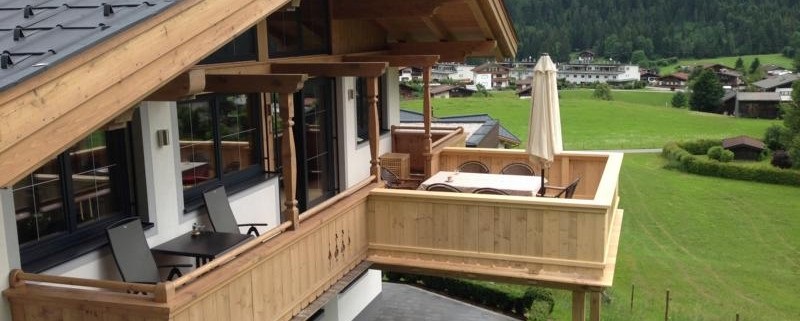


























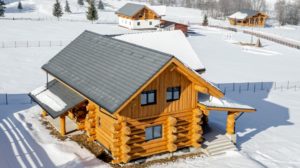


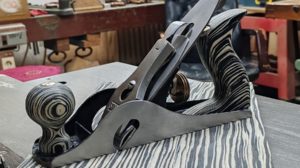
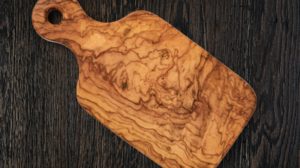
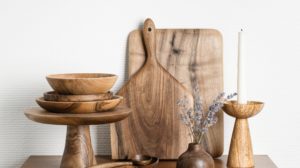
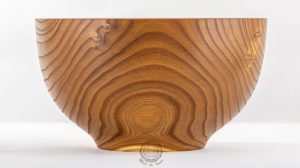



Good evening,
I have read your article on the "guide" of rules regarding exterior wood maintenance and I can say that it is the best I have read on the internet. I do have a couple of questions though, I have an exterior oak and fir gate that I varnished last year. Although I kept looking to get a better varnish, I can say I am very disappointed, after only a year, the varnish has mostly rubbed off the wood. Now I wonder how to remove the old varnish?! Mechanically, by sanding, or is there some substance that can remove the varnish? After this step, I was thinking to give the wood with oil or wax, but I don't know if it's good because the wood has been varnished before? What do you recommend? I don't want to give the doors a particular color, I want to keep the natural color of the wood.
Sincerely,
Dan vlad
Hello.
Thanks for your appreciation.
I would strip the remaining lacquer. I used some time ago Deconol, I think it was from Policolor. It did a very good job on a difficult surface (with carving). But it's not the only paint stripper out there. Apply with a brush, leave it on for a while, then remove the soaked varnish with a spackle. At the end "wash" the surface with thinner (wipe with a rag with thinner) and sand. This will remove any traces of varnish and you can apply oil. If it is gone so quickly, it is clear that the varnish has not penetrated very well into the wood, so there is no risk of varnish remaining after the above steps.
For finishing use oil-based varnish or wax impregnation. The products should be lightly coloured because otherwise they do not withstand UV radiation. But there are also light colours that change the natural colour of the wood very little.
Good luck!
Hello,
I have also used Owatrol stripper with great success, you can try it. I don't want to advertise it - that's what I used, that's what I recommend 🙂
To protect a wooden countertop in the bathroom, what would be the best solution?It would be a countertop on which the sink is placed.And what kind of wood would be better?Thank you.
Good evening!
There are 2 variants. Oil, which makes it very resistant to moisture, but has low shock resistance (depending on how hard the wood is).
The second option is a moisture-resistant varnish - polyurethane, water-repellent varnish.
In both cases the wood must be protected on all sides and in the area cut out for the washbasin.
Use a hardwood (oak, beech, ash) because it absorbs less moisture.
All the best!
Don't forget to subscribe to the printed Wood Magazine! For only 58 lei/year you can find out news in the field, discover craft ideas or trade secrets. We remind you that the content in the printed magazine is different from the one on the website. Details in the link below.
Thank you!https://revistadinlemn.ro/product/abonament-revista-din-lemn/
Hello
Thank you for all the articles written about wood. Many times I have turned to your site to enlighten me in some problem related to our wooden constructions and especially ways to protect them satisfactorily. I have seen that you recommend protecting wood on the outside more with oils or wax impregnations.
I know about the linseed oil protection (spicy or not?), but a carpenter-sculptor told me about the very good protection that mineral oils give. He told me that he uses Castrol motor oils... and others in the same range, with success. What do you recommend? Linseed oil or mineral, synthetic...
Now we are building a fence outside made of planks and pine cabinets; but we will also have pine doors outside, pine furniture outside (benches...).
Please.
Good evening!
Thank you too for following us!
Regardless of the oil used, it's all about moisture protection. Oils penetrate the wood and protect it against water from precipitation or moisture from the air.Mineral oils can also be used, but I think they are more expensive because they go through different purification processes. In the past, burnt engine oil was used to protect wooden fences or fittings, or unpurified products (tar, tar) were used. Tar was used to impregnate wooden railway sleepers. Mineral oils are derived from petroleum.
Linseed oil has been used since ancient times to protect wood, especially interior wood because it was odourless (unlike petroleum variants). Its problem is that it dries very slowly (4-5 days). In order to dry faster it has to be boiled or treated with chemicals (sodium hydroxide).
In conclusion, mineral oils can be used to protect wood. For outdoor use, for fencing, a little pigment staining is needed. Staining is intended to protect against UV radiation. Colourless oil only protects against moisture.
Pure mineral oil is used to protect wooden dishes that come into contact with food (you have a link below).
All the best!
https://revistadinlemn.ro/2019/07/11/protejarea-vaselor-de-lemn-din-bucatarie-cu-materiale-netoxice/
Hello,
Can you tell me how I should treat birch stems before using them for interior decoration?
Thank you
Hello!
In order to have as little moisture as possible the wood should have been cut in late autumn or winter (November-January).
After it is cleaned, the cutting area is coated with paraffin or wax so that the water comes out slowly to avoid creating tensions in the wood that lead to cracks. It should then be stored in an unheated space with constant temperature and air circulation (cellar, shed or attic). In the house, because of the high temperature and dry air, water tends to escape more quickly and cracks can occur. Depending on the thickness of the stems, drying can take several months.
Natural drying is recommended for birch. If it is force-dried or treated with various stabilizing products (Pentacryl) the wood and bark change colour and turn yellow.
All the best!
I neglected to mention that once it has reached a humidity of 8-12%, it is best to apply a very thin coat of clear varnish to make maintenance easier. You can use water-based varnish or polyurethane varnish sprays. If the tree is cut in winter and is not very thick, it can be used for decoration in 2-3 months.
All the best!
Nice, useful, documented and to the point. Thank you very much.
With pleasure!
Hello, thank you so much for the extremely useful articles you post and for the thoughtfulness with which you answer the questions in the comments (very useful answers too). Your passion for wood inspires.
I have read your recommendations for exterior wood protection with professional products (ICA/Lomilux, Sirca, etc.) or Sadolin Tinova. I asked a Lomilux representative about durability and was surprised to learn that the outdoor products offer approx. 3 years. Given this, I was wondering why a professional product like ICA would be more suitable than any other commercially available lacquer that has similar durability but is perhaps cheaper. Does it offer other benefits or is the durability on average longer?
Thank you in advance for your answer! I'm in great doubt about what to buy to paint my pine fence.
Dana
Hello!
Thanks for your appreciation!
The strength of the exterior finish also depends on the position of the object. The fence is most affected, standing directly in the rain and sun. For this reason the resistance of the fence finish is the lowest. Probably this was the reason why the ICA representative will tell you that it will last only 3 years. From my information ICA has oseries of outdoor products with very good resistance, over 10 years. But like I said, because of exposure, the durability of the same product can be different. The finish of the windows of the same house yield differently, if one faces south and others face north.
As far as the difference between professional rpoduse, such as ICA and DIY, it really exists. However, in this system, the way the wood is prepared and the way it is applied is also important. That's why I recommend specially designed products for DIY projects. Professional products, used incorrectly, can have lower resistance than DIY products.
As far as fencing is concerned, I recommend oil-based or water-based waxes for fencing (I believe the ICA representative recommended such a product). They are products with lower resistance over time, but refinishing is very easy, just applying another coat, without sanding or other kind of preparation. Re-application should be done every 2-3 years or when the wood no longer has that silky sheen given by oil or wax and gets a dry look.
I hope this has been helpful.
All the best!
Thank you very much for the comprehensive answer! You have helped me a lot, again!
Good evening Mrs Mihaela,
Please, I am faced with the following situation: I need to extend the top edge of a balcony outside by 12cm in order to reach the level of the railing to close it with a double glazing (the top edge is made of reinforced concrete.The balcony is exposed to strong sun, rain or snow, depending on the season. I was thinking of a wooden cabinet (beam, I don't know the exact term) fixed with studs to the upper part of the balcony and the area above, outside of the wood covered with sheet metal. What kind of wood and what technical and maintenance solutions could you recommend?
Thank you very much and congratulations for what you do.
Hello!
Thanks for your appreciation!
In my opinion, the most suitable would be a pine (resinous) beam. For greater stability use a glued beam (several layers of glued wood) for the outside (available in building material centres). Very strong wood for the outside is acacia and oak. But they are more expensive and harder to find.
If the beam is covered with board, a linseed oil protection is very good. If it is not coated it will be hard to maintain because whatever finish you use needs maintenance and even refinishing after a few years.
To avoid problems, the technical solution must be such that the wood is slightly inclined to prevent water from accumulating and puddling. The wood must also be mounted in such a way as to allow air to circulate. This way, if it gets wet or condensation occurs, it dries without any consequences.
All the best!
Thank you very much. Have a nice day!
Hello. I would need some advice as quickly as possible if possible please. I'm going to buy wood for roof construction, beams, planks, laths, etc. From where I buy it is stored outside in the sun. The question would be when is it good to buy it? The roof will be done by August at the latest but I would buy it now. What do you recommend?
Good evening!
If you have somewhere to store it so that it is protected from moisture and air can circulate to fluff it if drying continues, you can take it now. The idea is to be careful with storage because wood in storage is not always well dried. If it has been sitting in the sun it is likely to show 10-12 moisture on the surface, but inside it will be much higher.
The wood should be stored in a shed, stacked with slats between planks so that air can circulate.
All the best!
Good evening,
Can you please help me with some advice?
I want to buy a log cabin made of round wooden logs, inside it looks very nice, but outside the logs are a bit discolored and in some parts blackish. It has not been lived in at all. If I buy it, what is to be done to restore the colour of the outside?
Hello!
Being uninhabited it probably hasn't been treated on the outside. The color change is from the sun, and the blackish portions mean mold. But it's nothing serious. Just remove the top layer of affected wood and you'll end up with clean, healthy wood.
The simplest and easiest way to remove the damaged layer of wood is sandblasting. There are companies that do this. Sandblasting involves a special machine and is difficult to do if you have no idea of the process. Wood removal can also be done by hand sanding or with sanding machines.
Once you've got the wood clean it's good to treat it against decay and mould. These are very effective solutions to prevent the appearance and thus protect you from possible surprises. Finally apply a protective treatment (oil-based exterior varnish or exterior varnish).
You can do all these operations yourself, with quite a lot of effort, or you can call in companies that do the whole procedure of cleaning and protecting the wood.
Good luck!
https://revistadinlemn.ro/2020/12/08/solutie-impotriva-lemnului-innegrit-si-a-mucegaiul-de-pe-lemn-pereti-piatra-marmura/
https://revistadinlemn.ro/2020/08/27/tratament-preventiv-impotriva-ciupercilor-mucegaiului-si-a-insectelor-care-ataca-lemnul/
https://revistadinlemn.ro/2020/07/02/lazuri-kreidezeit-pe-baza-de-ulei-pentru-finisaj-exterior-natural-si-rezistent/
https://revistadinlemn.ro/2020/06/25/rezistenta-de-peste-10-ani-pentru-ferestrele-din-lemn-finisate-cu-arborea-bio/
Hello,
I want to renovate the ground floor of my house, the ground floor dating from 1930. The house is made of load-bearing masonry, on a concrete foundation (about 120 cm), probably without a capillary breaking layer. Soil : sandy clay. On the ground floor, the flooring (in fish scales) is fixed on wooden beams, on beaten earth. In areas where the flooring has been covered with solid furniture for a long time, the beams have rotted and the flooring has sagged.
I would like to redo exactly the same system, but to have the beams on a 10 cm layer of monogranular gravel.
Could you please advise me:
What kind of wood to make the beams from
Which treatment should be applied (anti humidity, insects)
To provide local asphalt cardboard under the beams, is that enough? If enough continuous sheeting what type of sheeting lets vapour/moisture circulate ( permeable ) - a geotextile ?
On the joists I want to put a tri-ply oak parquet (I can't use the old parquet).
For this I have to beat the floor as a support and then I would like to float the floor on a layer of cork (which is vapour permeable from what I read on the data sheet). Does this new material complex remain permeable enough? The principle of the old floor being that any moisture is evacuated diffusely through this permeable ventilated wooden floor.
Can I use OSB boards fixed on beams as support instead of the shower, or do I risk creating a vapour barrier that will not let the moisture in the soil ventilate? The floor and the support will be placed at a distance of about 1 cm from the wall, all around the perimeter, which will be covered with skirting. I think this will allow for a circulation of air currents.
Recap layers:
1. Pamint
2. 10 cm monogranular gravel
3. Asphalted cardboard under beams or permeable foil everywhere
4. Wooden beams at 40 cm centres
5. Flooring or OSB tiles
6. Sound and thermal insulation made of cork (min. 4 mm)
7. Oak parquet, floating
Thank you for any advice you can give me!
Good evening,
I have 20 sqm outdoor terrace but covered, made of 50mm thick red pine wood, exposed to the sun and partly rain when it's windy. what treatment would be indicated? Thank you !
Good evening!
I would use oil-based varnish or oil-based paint or their alkyd variants (oil-based are natural, alkyd are synthetic). Paint provides better sun resistance compared to varnish because it completely covers the wood. With varnish, however, you don't lose the natural beauty of the wood.
In the article below you have several options to protect wood outside, with their pluses and minuses.
I'm also leaving an article with recommendations for outdoor wooden constructions.
Good luck!
https://revistadinlemn.ro/2022/05/19/ce-variante-ai-pentru-protejarea-lemnul-folosit-la-amenajarile-exterioare/
https://revistadinlemn.ro/2022/12/15/cum-sa-alegi-lemnul-solutia-constructiva-si-materialele-de-protectie-pentru-proiecte-rezistente-la-exterior/